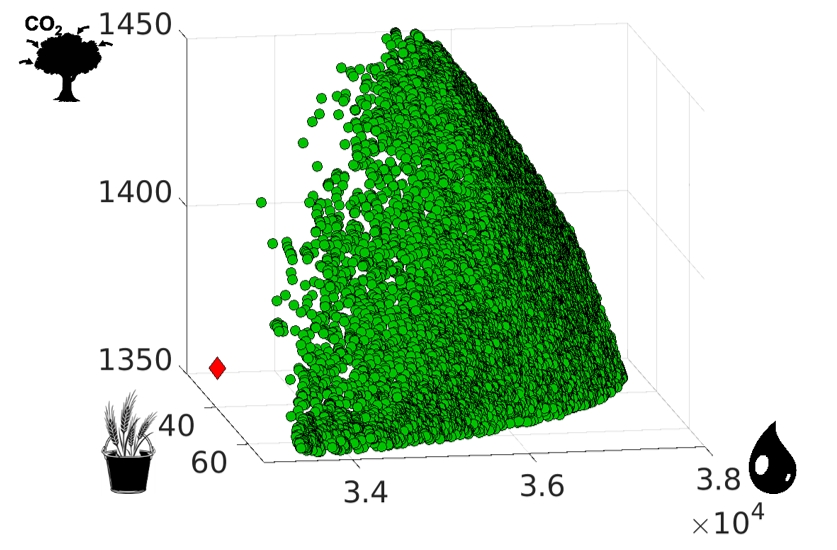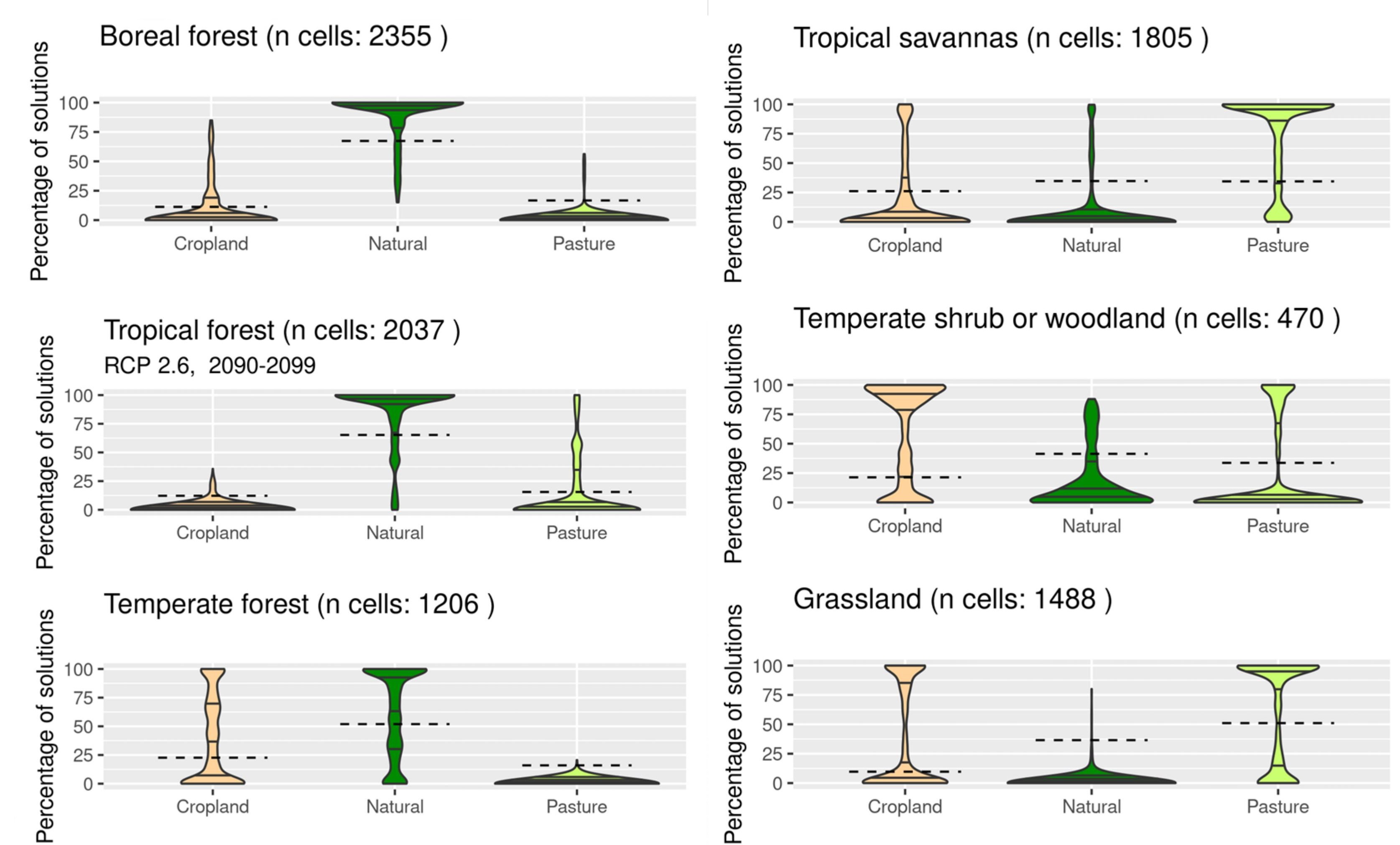Re-arranging food production: How we could use the vegetation zones on our planet more efficiently
Imagine we could almost double the amount of crops we grow on our planet, while at the same time increasing the freshwater supplies and carbon storage! Tell you what: We actually could, if we re-arranged the location of food production on our planet. According to the biophysical potential of planet Earth, this would be possible. This is what researchers Sven Lautenbach (University of Heidelberg and HeiGIT), Anita Bayer and Almuth Arneth (both Karlsruhe Institute of Technology, Campus Alpin in Garmisch-Partenkirchen) found out in their new article that has now been published in the renowned journal “Proceedings of the National Academy of Sciences” (PNAS).
The thing is: Our global landuse patterns, and hence the places where and how we produce our food, are a result from a long-term historical development. But since our comsumption has changed and increased over the past hundreds of years, these spaces of food production are not sustainable anymore: They do not reflect the biophysical potential of our ecosystems. We destroy forests for more cultivable land and rely heavily on irrigation – measures that have a massive negative influence on water conservation and carbon sequestration. And since the world’s population increases, these problems are becoming worse and worse. To put it in a nutshell: Technically, it simply does not make much sense to produce food where we do now.
 Figure a) represents the mean over all solutions on the solution front. The percentage value tells what proportion of the solutions in this cell has assigned the respective use. Figure b) on the right shows global land use in its current state.
Figure a) represents the mean over all solutions on the solution front. The percentage value tells what proportion of the solutions in this cell has assigned the respective use. Figure b) on the right shows global land use in its current state.
What if we could re-arrange our food-production spaces to more efficient places? When we grew our food where we didn’t have to rely on irrigation as much? This is what Lautenbach, Bayer and Arneth wanted to know when they combined a dynamic vegetation model and an optimizing algorithm to global land use data. The modelling of an optimized landuse was carried out for climate conditions from scenarios of the near and distant future (2033-2042 and 2090-2099). In each case, one optimistic and one realistic emission scenario were used. The researchers found out that simply by re-arranging those spaces, we could increse food production by 83%, while at the same time increase available water runoff by 8% and inrease carbon storage by 3% compared to not changing the locations. The increases would be even higher if one of the three targets were given priority over the other two.
 Illustration of the optimal land use identified in the study. The green dots visualise possible optimal solutions in terms of food production, CO2 storage and water availability, plotted according to their global totals of the three target values. Behind each dot is a map of the global distribution of natural, arable and pasture land. The red dot shows the suboptimal production of current land use.
Illustration of the optimal land use identified in the study. The green dots visualise possible optimal solutions in terms of food production, CO2 storage and water availability, plotted according to their global totals of the three target values. Behind each dot is a map of the global distribution of natural, arable and pasture land. The red dot shows the suboptimal production of current land use.
The prerequisite for this, however, would be a radical spatial reorganisation of food production. How would such a spatially optimized food production look like?
-
Tropical Forests and boreal forests would, because of their high capacity for C-storage, remain natural terrain and not be used or destroyed for food production.
-
If used optimally, the Temperate Regions would instead be used mainly for crop production and, to a lesser extent, as pasture. This could compensate for the loss of land through the reforestation of tropical and boreal forests.
-
The vast, open spaces of Tropical and Subtropical Savannas as well as grasslands would be mainly used as pastures for fodder production.
 The diagrams show the land use assigned to the vegetation zones by the optimisation. The histograms represent the variability across the possible solutions.
The diagrams show the land use assigned to the vegetation zones by the optimisation. The histograms represent the variability across the possible solutions.
According to the researchers, the study clearly shows that despite unfavourable climatic changes, there is potential to significantly increase agricultural yields through optimised land use while limiting land consumption. “Even if such large-scale land use changes seem completely unrealistic at first glance, it is helpful to realise that climate change will lead to major changes in cultivation areas anyway,” says Professor Sven Lautenbach, a scientist at the Institute of Geography at the University of Heidelberg and at the same time a member of HeiGIT, who also contributed significantly to the study. “These expected changes should not simply be allowed to happen, but increased efforts should be made to shape them, taking into account the biophysical potentials.”
For more detailed information on the spatial impact of such an optimization and what such an analysis cannot take into accound (e.g. barriers to global trade), you can read the full paper here: https://www.pnas.org/doi/10.1073/pnas.2220371120

